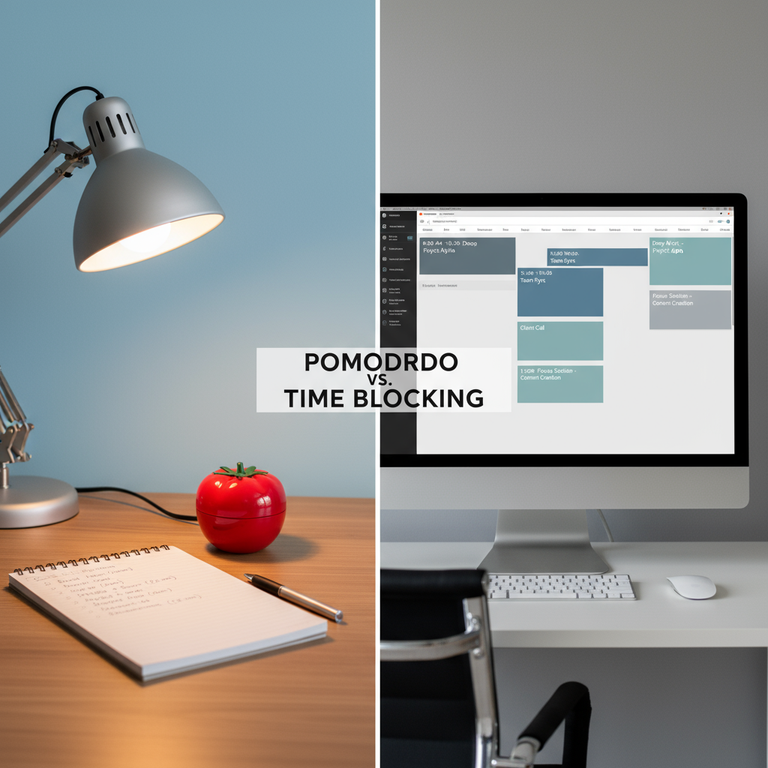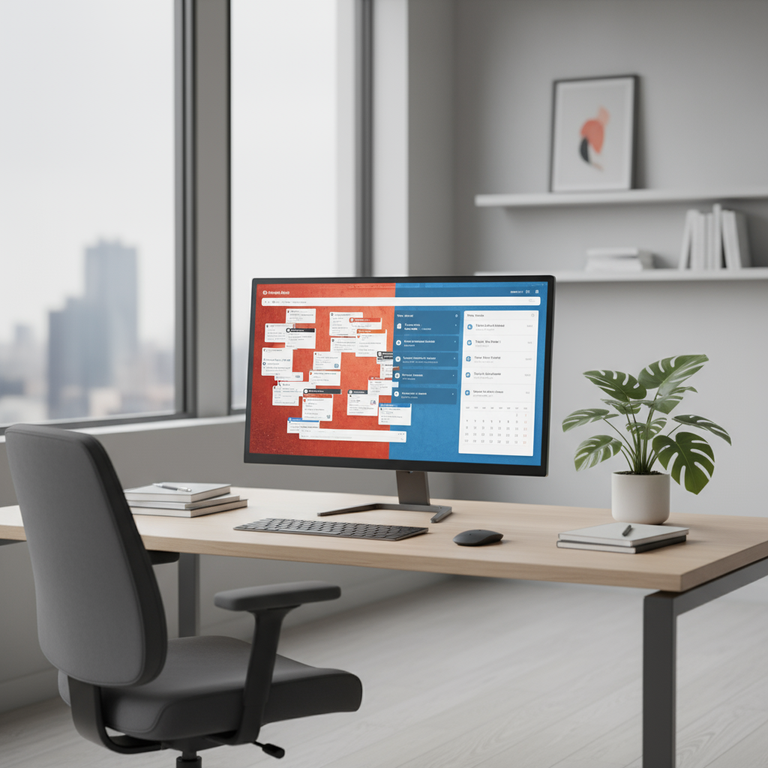The Myth of Time Management: Why You Should Manage Your Energy (Not Your Hours)
For decades, the gospel of productivity has been “Time Management.” We’ve been taught that the key to high performance is to control our 24-hour day with ruthless efficiency. We’ve downloaded the apps, we’ve color-coded our calendars, we’ve mastered the to-do lists. And yet, an overwhelming number of us are still exhausted, overwhelmed, and feel like we’re constantly falling behind. We are managing our hours perfectly but still producing mediocre work.
This is the great paradox of modern productivity. The problem is not that we are bad at managing our time; the problem is that “time” is the wrong metric to manage. Time is finite and fixed. Every human on earth gets the same 24 hours. You cannot create more time. What you *can* do is cultivate and manage the one resource that truly dictates your output: your energy.
This article will dismantle the myth of time management and present a superior framework: why you must manage your energy (not your hours). A high-performer with two hours of peak energy will create more value than a burned-out professional with twelve hours of “work time.”
Why ‘Time Management’ Is a Broken Model
The core assumption of time management is that an hour is an hour. It treats every 60-minute block as an equal, interchangeable unit of potential. This is fundamentally false. The “hour” you have at 9 AM after a great night’s sleep, a good breakfast, and a clear mind is *not* the same “hour” you have at 4 PM after eight back-to-back meetings and a stressful confrontation.
Time Is Fixed, Energy Is a Variable
You cannot change the 24-hour clock. It is an external constraint. Your energy, however, is a dynamic, personal resource that you can deplete, renew, and strategically manage. Energy is the *quality* of your time. When you focus on managing time, you are just moving around empty boxes. When you focus on managing energy, you are controlling what you put *inside* those boxes.
The Cognitive Cost of “Being Busy”
Time management systems often encourage “busyness.” They help you cram more *tasks* into your day. But high-value work (like strategic thinking, creative problem-solving, or deep learning) requires a massive amount of cognitive energy. If you spend your entire day in a “reactive” state—answering emails, attending meetings, putting out fires—you are depleting your high-quality mental energy on low-value tasks. By the time you finally block out “focus time,” you have no fuel left in the tank. You have the time, but you don’t have the *capacity*.
The Four Dimensions of Energy: The Key to High Performance
To manage your energy (not your hours), you must first understand that energy is multi-dimensional. Based on the work of authors Tony Schwartz and Jim Loehr, high performance requires managing four separate (but interconnected) types of energy.
1. Physical Energy (The Body)
This is the foundation. Your physical energy dictates your fundamental capacity to be alert and resilient. It is influenced by sleep, nutrition, hydration, and exercise. If you are surviving on caffeine and sugar, getting five hours of sleep, and never moving your body, you are operating with a severe physical energy deficit. No productivity “hack” can fix this.
2. Emotional Energy (The Heart)
This is the *quality* of your energy. Are you feeling optimistic, engaged, and positive? Or are you feeling cynical, anxious, and defensive? Negative emotions are a massive energy drain. A toxic workplace or a difficult relationship can deplete your emotional reserves faster than any task on your list. Positive, high-quality emotional energy is what allows you to be resilient, patient, and creative under pressure.
3. Mental Energy (The Mind)
This is your cognitive capacity. It’s your ability to focus, analyze information, and think strategically. This energy is finite and depletes with every decision you make (this is called “decision fatigue”). If you spend your morning on 50 tiny, trivial decisions, you are draining the mental energy you need for the *one* big decision that actually matters. This is why you must manage your energy (not your hours) by protecting your peak focus time.
4. Spiritual Energy (The Soul)
This is your “why.” It’s your sense of purpose and meaning. This is the deepest and most powerful energy source. When your work is aligned with your core values and a mission you believe in, you can tap into a well of motivation that makes work feel energizing, not draining. When you are disconnected from your “why,” even the smallest task feels like a monumental effort.
A Practical Guide: How to ‘Manage Your Energy (Not Your Hours)’
This is not just a theory; it’s an actionable strategy. Here is how to implement an energy-first productivity system.
Step 1: Conduct an Energy Audit
You cannot manage what you do not measure. For one week, track your energy levels. Don’t just track *what* you do; track *how you feel*. Note the times of day when you feel most focused, creative, and physically strong. Also, note the specific tasks, people, or meetings that leave you feeling completely drained.
You will quickly see patterns. For example: “My mental energy is at its absolute peak from 8 AM to 10 AM,” or “That 2 PM status meeting drains all my emotional energy for the rest of the day.” This data is the foundation of your new system.
Step 2: Align Your Highest-Value Tasks with Your Peak Energy
This is the most critical rule. Stop organizing your day by “what’s due next” and start organizing it by *energy*. Take your most important, high-value, cognitively demanding task (e.g., writing the strategic plan, coding a complex feature) and schedule it *during your peak energy window* (e.g., 8 AM to 10 AM).
This is a non-negotiable block of time. Protect it like you would your most important asset, because it is. Use your low-energy periods (like the post-lunch slump) for low-value, administrative tasks like answering routine emails or filing expenses. This is the essence of why you manage your energy (not your hours).
Step 3: Build in Strategic “Renewal” Rituals
In the “time management” world, breaks are seen as a failure of efficiency. In the “energy management” world, breaks are a non-negotiable requirement for high performance. Your energy depletes, and it *must* be renewed.
High performers work in “sprints,” not marathons. Work with intense, deep focus for 60-90 minutes, and then take a *real* break. “Real” does not mean switching from a spreadsheet to checking email. It means fully disconnecting. Stand up, walk around, get a glass of water, look out the window. These micro-breaks allow your mental and physical energy to recover, enabling you to return to the next sprint with renewed focus.
Step 4: Triage and Defend Your Emotional Energy
Your emotional energy is fragile. You must actively defend it. Identify the “energy vampires” in your life—the tasks, projects, or even people that consistently fill you with dread or anxiety. Then, find ways to mitigate them.
- Can you delegate that task?
- Can you batch all your “annoying” admin work into one 30-minute block?
- Can you set boundaries with a difficult colleague?
It’s just as important to *cultivate* positive emotions. Before a difficult call, spend one minute thinking about a recent win. This simple act can shift your emotional state from defensive to positive, completely changing the outcome of the interaction.
Conclusion: The True Source of Productivity
Stop seeing your calendar as a 24-hour container to be filled. Start seeing it as a roadmap for your energy. The goal is not to be the busiest person; the goal is to be the most effective. The most productive people in the world are not the ones who manage their time the best; they are the ones who have mastered the art of energy management.
When you learn to manage your energy (not your hours), you change the entire equation. You stop asking, “How much can I do?” and start asking, “What is the highest-value thing I can do with the peak energy I have right now?” This shift doesn’t just make you more productive; it makes you more creative, more resilient, and ultimately, more sustainable.







